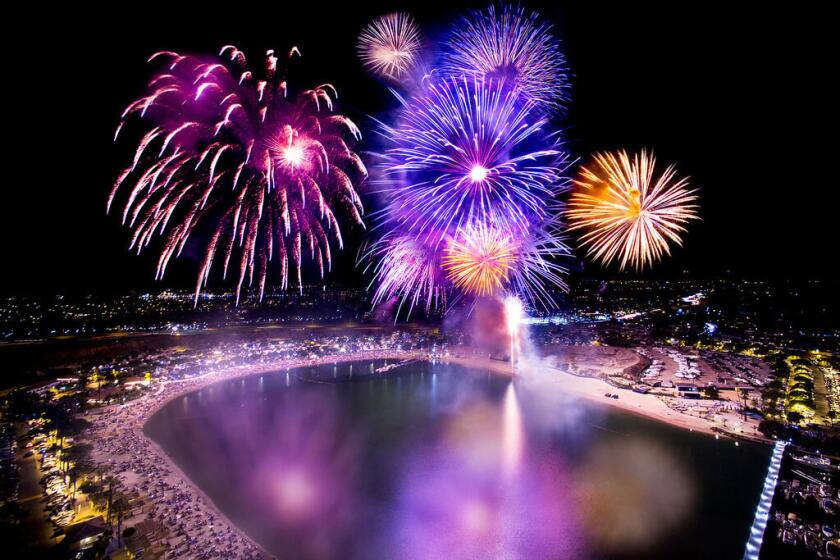Commentary: Brushes with Arnold Palmer create a lifetime of memories
- Share via
It was two days after my 12th birthday in 1961 when I was following Arnold Palmer at Rancho Park during the Los Angeles Open.
The ninth hole was a narrow par 5 bordered by the driving-range fence on the right and a street on the left. It wasn’t a long par 5 but you had to keep your second shot in play, with most of the pros laying up with an iron to thread the narrow, uphill opening to the green.
But that wasn’t Palmer’s style. He didn’t play safe.
I stood there watching him hit four, 3-wood shots out of bounds. The first two sliced over the high driving range fence. And the second two were hooked out of bounds into the street.
He ended up making 12. Today, they have a plaque erected to commemorate his infamous 12 on what is now the 18th hole.
Even at age 12, I wondered why in the world he would keep hitting the same low percentage, go-for-broke shot. Remember Roy McAvoy in the movie “Tin Cup” when he stubbornly keeps hitting the same shot into the water out of an overly-confident, never-lay-up attitude, despite the fact that it was costing him a lot of prize money?
Well, Palmer was the real “Tin Cup,” except he had a lot more talent, charisma and class. And, often enough, his risky shots paid off because he had the ability to hit shots that few other pros could imagine or pull off. With the possible exception of Tiger Woods, in the last 55 years, I can’t remember watching a more exciting player.
Palmer was 32 back in 1961, and it’s hard to describe the impression he made on me with his good looks, big smile, iron-man biceps, forearms and giant hands. He chain-smoked, hitched up his pants before hitting a shot, and with his shirt tail hanging out, lashed at the ball with a fury that challenged the smooth swinging pros of his generation. Palmer embodied the look and attitude of what it meant to be a real man in his generation.
I was fortunate to follow him in person many times over the years at the peak of his skill through the’60s. So decades later, a senior tournament was played at the same course, and he was kind enough to autograph my visor, as he was walking to a tee box. He was willing to do this during play, which was against the protocol.
I said to him, “You know, I’ve been following you for over 20 years, would you please sign this for me?” He could have easily rebuffed me and told me to try when the round was over.
But he smiled and signed it, saying, “Thanks for your support.” I still have it today, preserved in pristine condition in a plastic bag.
The last time I followed him in person was when he came to play in the Toshiba Classic, about age 70 or so. On the 10th hole he hit his drive into a bunker on the left side of the fairway. He had about 170 yards and didn’t catch his bunker shot as crisply as he wanted.
With some irritation, he said, “I used to be able to hit this kind of shot.”
I replied, “You still can.”
Thanks, Arnie, for a lifetime of golf memories. You were the best ambassador and role model that golf ever had. Your charisma filled the TV screen and paved the way for the modern era of big-time commercial golf. And you lived a dream life as a legend who will never be forgotten.
STEVEN HENDLIN is a sports psychologist in Newport Beach.



